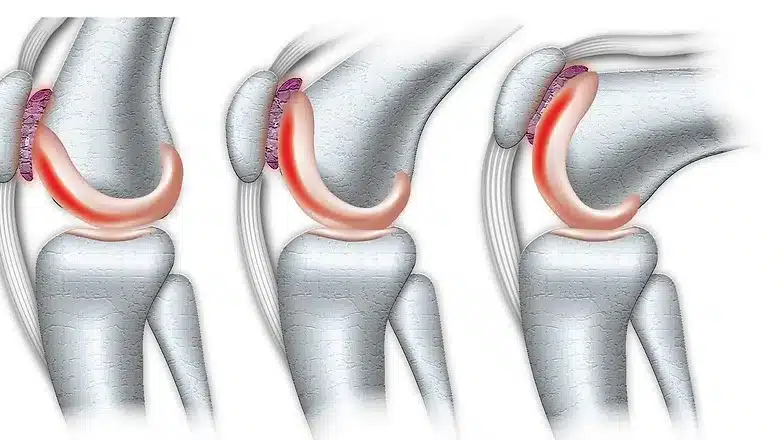Chondromalacia Patella

Chondromalacia patellae, also known as “runner’s knee,” is a condition where the cartilage on the undersurface of the patella (kneecap) deteriorates and softens. This condition is common among young, athletic individuals, but may also occur in older adults who have arthritis of the knee.
Chondromalacia is often seen as an overuse injury in sports, and sometimes taking a few days off from training can produce good results. In other cases, improper knee alignment is the cause and simply resting doesn’t provide relief. The symptoms of runner’s knee are knee pain and grinding sensations, but many people who have it never seek medical treatment.
KNEE PATELLA ANATOMY

DISEASE EXPLAINED

SYMPTOMS
SYMPTOMS
Chondromalacia patella will typically present as pain in the knee region, known as patellofemoral pain. You may feel sensations of grinding or cracking when bending or extending your knee. Pain may worsen after sitting for a prolonged period of time or during activities that apply extreme pressure to your knees, such as standing for an extended period or exercising.
Talk to your doctor if you have knee pain that doesn’t improve within a few days.
CAUSES
Your kneecap normally resides over the front of your knee joint. When you bend your knee, the backside of your kneecap glides over the cartilage of your femur, or thigh bone, at the knee. Tendons and ligaments attach your kneecap to your shinbone and thigh muscle. When any of these components fails to move properly, it can cause your kneecap to rub up against your thigh bone. This abnormal rubbing can lead to deterioration in the patella, resulting in chondromalacia patellae, or runner’s knee.
Improper kneecap movement may result from:
Poor alignment due to a congenital condition
Weak hamstrings and quadriceps (the muscles in the back and front of your thighs, respectively)
Muscle imbalance between the adductors and abductors (the muscles on the outside and inside of your thighs)
Repeated stress to your knee joints, such as from running, skiing, or jumping
A direct blow or trauma to your kneecap
TREATMENT

TREATMENT OPTIONS
The goal of treatment is to reduce the pressure on your kneecap and joint. Resting, stabilizing, and icing the joint may be the first line of treatment. The cartilage damage resulting in runner’s knee can often repair itself with rest.
Your doctor may prescribe several weeks of anti-inflammatory medication, such as ibuprofen, to reduce inflammation around the joint. If swelling, tenderness, and pain persist, the following treatment options may be explored.
PHYSICAL THERAPY
Physical therapy focusing on strengthening the quadriceps, hamstrings, adductors, and abductors can help improve your muscle strength and balance. Muscle balance will help prevent knee misalignment.
Typically recommended are non-weight-bearing exercises, such as swimming or riding a stationary bike. Additionally, isometric exercises that involve tightening and releasing your muscles can help to maintain muscle mass.
SURGERY
Arthroscopic surgery may be necessary to examine the joint and determine whether there’s misalignment of the knee. This surgery involves inserting a camera into your joint through a tiny incision. A surgical procedure may fix the problem. One common procedure is a lateral release. This operation involves cutting some of your ligaments to release tension and allow for more movement.
Other surgical options may involve smoothing the back of the kneecap, implanting a cartilage graft, or relocating the insertion of the thigh muscle.
DISCLAIMER
- All of the opinions expressed within the educational information delivered within the provided links are those of their authors and not necessarily those of either your treating doctor or CRO.
- This site is for educational purposes only!!
- Copyright Disclaimer under Section 107 of the copyright act 1976, allowance is made for fair use for purposes such as criticism, comment, news reporting, scholarship, and research. Fair use is a use permitted by copyright statutes that might otherwise be infringing. Non-profit, educational, or personal use tips the balance in favor of fair use.
